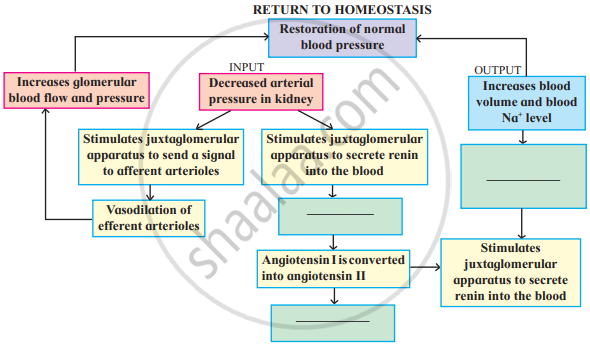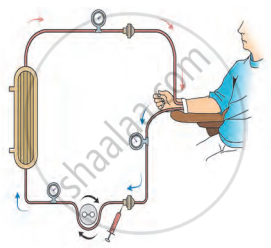Advertisements
Advertisements
प्रश्न
Urea splitting bacteria are responsible for _______ types of stones.
(A) calcium oxalate
(B) calcium phosphate
(C) calcium carbonate
(D) struvite
उत्तर
struvite
APPEARS IN
संबंधित प्रश्न
Correct the sequence of the following steps to explain the process of urine formation.
1. Blood enters the glomerulus under high pressure.
2. The filtrate passes through the thin walls of the Bowman’s capsule into the renal tubule
3. As the filtrate, passes through the tubule, water, and many useful substances are reabsorbed by the walls of the blood capillaries.
4. Water and small solutes are filtered in the Bowman’s capsule.
5. The remaining liquid, along with waste is called urine and is collected in the urinary bladder.
6. Blood containing waste material enters the kidneys through the renal artery.
Complete the diagram/chart with correct labels/ information. Write the conceptual details regarding it.

Complete the diagram/chart with correct labels/ information. Write the conceptual details regarding it.

Identify the following structures and explain their significance in renal physiology?
- Juxtaglomerular apparatus
- Podocytes
- Sphincters in the bladder
In acute renal failure the urine output decreases. This condition is called ____________.
Dialysis is an imperfect treatment because ______
Which of the following is CORRECT with reference to haemodialysis?
Match the abnormal conditions given in Column A with their explanations given in Column B and Choose the correct option
| Column A | Column B |
| A. Glycosuria | i. Accumulation of uric acid in joints |
| B. Renal calculi | ii. Inflammation in glomeruli |
| C. Glomerular nephritis | iii. Mass of crystallised salts within the kidney |
| D. Gout | iv. Presence of glucose in urine |
Which statement is correct regarding the haemodialysis procedure?
Presence of which of the following conditions in urine are indicative of diabetes mellitus?
